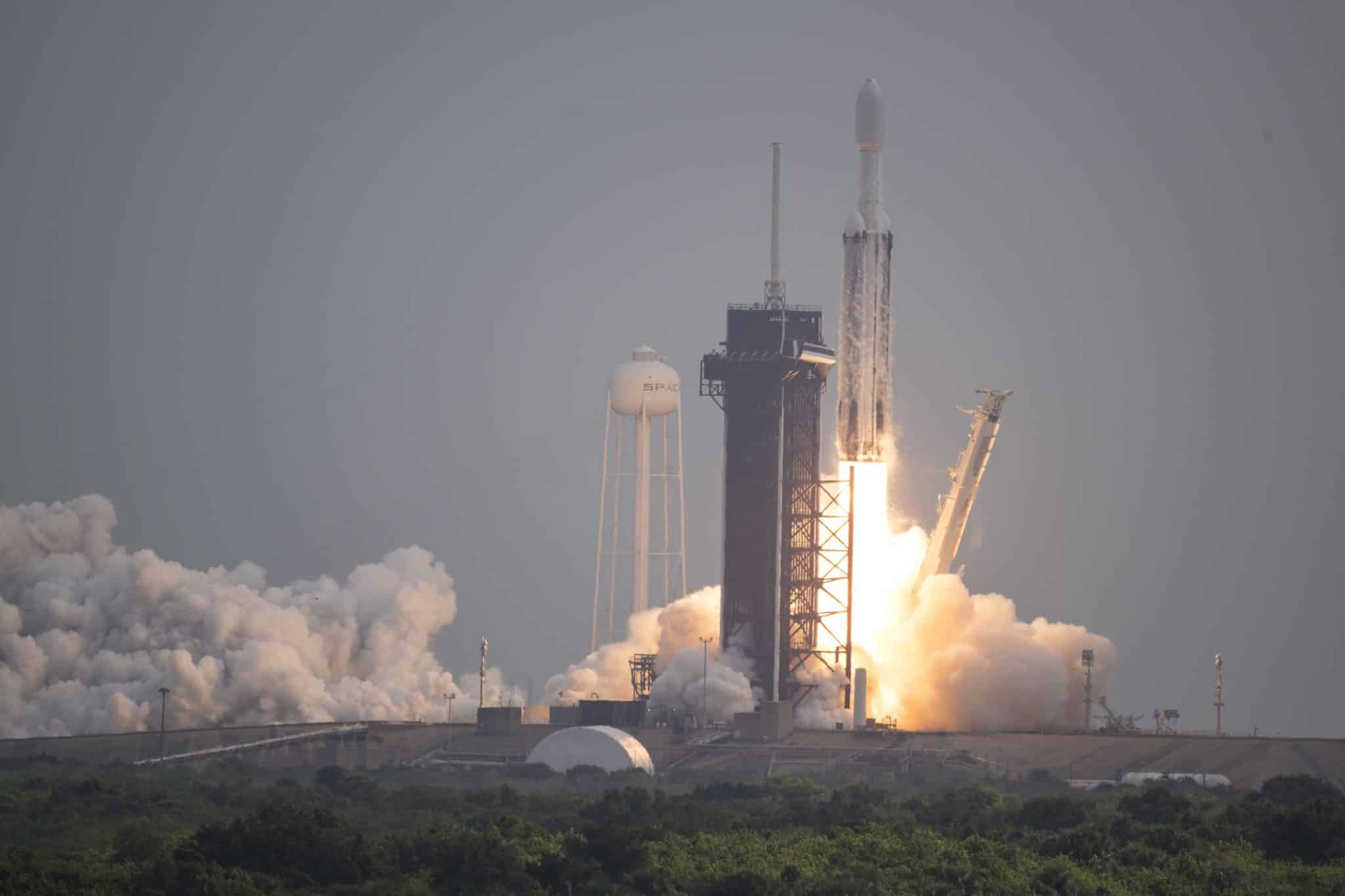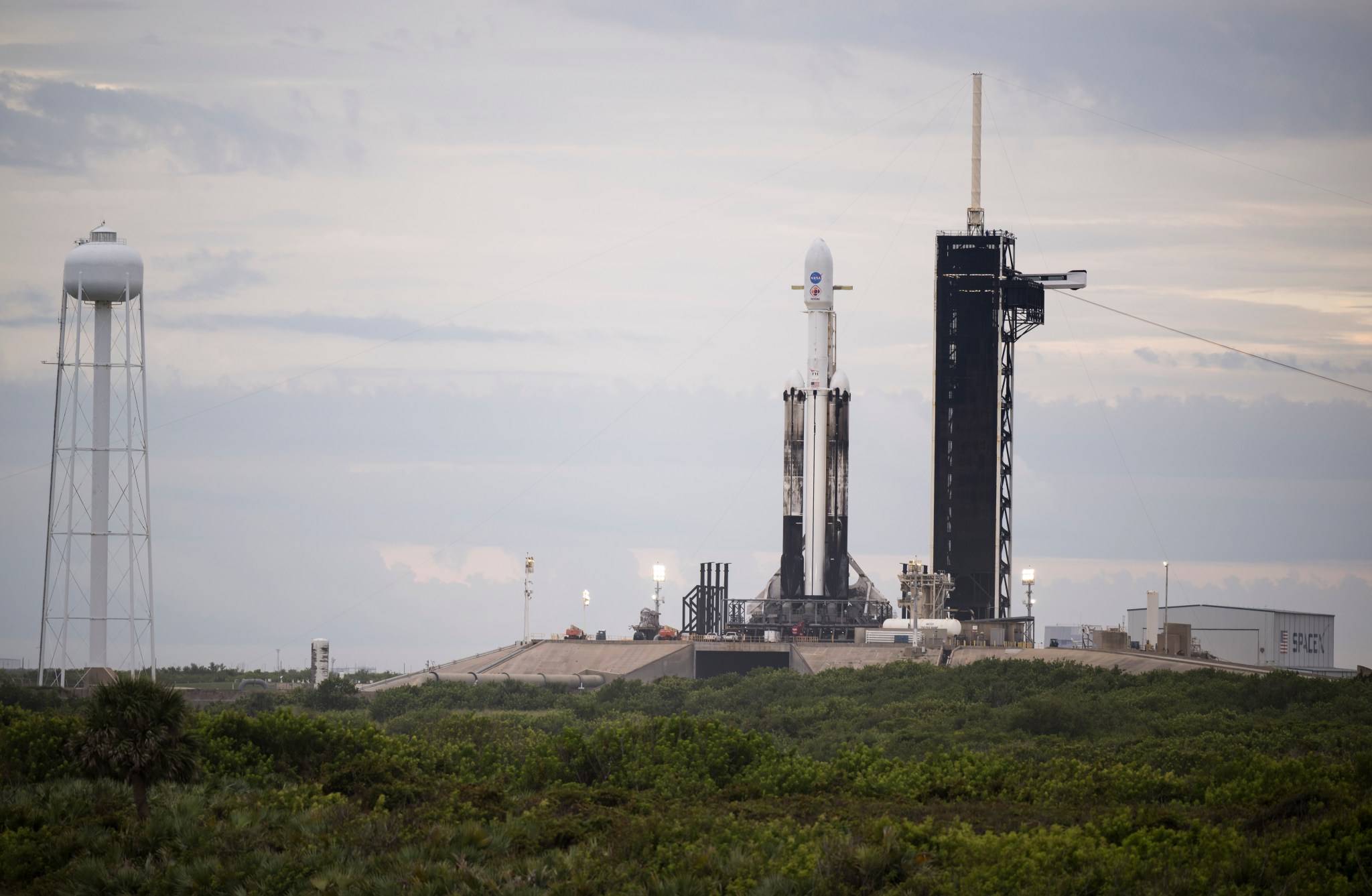Science
NASA Spacecraft Launched To Mysterious And Rare Metal Asteroid In First Mission Of Its Kind

Cape Canaveral, Florida — On Friday, the Psyche spacecraft departed on a six-year mission to a rare metal-coated asteroid.
Most asteroids are typically icy or stony; this is the first investigation into a metal world. It may cast light on the inaccessible cores of Earth and other rocky planets, as scientists speculate it may be the tattered remnants of an early planet’s core.
SpaceX launched the spacecraft from NASA’s Kennedy Space Centre into an overcast midmorning sky. Devoted to the asteroid it is tracking, Psyche is projected to arrive at the enormous, potato-shaped object in 2029.
Scientist Laurie Leshin, the Jet Propulsion Laboratory director at NASA, exclaimed, “It’s so exciting!” As a member of the Psyche crew, Jim Bell of Arizona State University remarked, “What an incredible journey thus far!”
Following an hour, the spacecraft effectively detached from the rocket’s upper stage and began to float away, eliciting jubilation from controllers on the ground.
After decades of exploring planets composed of rock, ice, and gas, NASA is excited to pursue a metallic world. Psyche is the largest of the approximately nine metal-rich asteroids identified to date. It is situated in the outer region of the main asteroid belt, between Mars and Jupiter, in the company of millions of other space rocks. It is in orbit around the planet. It was identified in 1852 and bestowed with the name of an alluring deity of the soul from Greek mythology.
Exploring the Earth’s metal interior has been a long-held human ambition. Lead scientist Lindy Elkins-Tanton of Arizona State University stated before the launch, “I mean, ask Jules Verne.”
“Excessive pressure is present.” The temperature is excessively elevated. “It is technologically impossible,” she declared. “However, one possible approach to observe a metal core within our solar system is by setting foot on this particular asteroid.”
On Friday, the Psyche spacecraft departed NASA on a six-year mission to a rare metal-coated asteroid.
Based on radar and other observations, astronomers have determined that the asteroid is sizable, measuring approximately 173 miles (280 kilometers) in length and 144 miles (232 kilometers) at its broadest point. They believe it is brimming with iron, nickel, and other metals and silicates and that its dull, predominantly grey surface is likely covered with fine metal granules from cosmic impacts.
Aside from that, it is a mere pinpoint in the night sky, shrouded in mystery until the spacecraft, which has traveled over 2 billion miles (3.6 billion kilometers), arrives at it.
According to Elkins-Tanton, scientists’ predictions—spiky metal craters, enormous metal cliffs, and greenish-yellow eroded lava flows encrusted with metals and derived from sulfur—are “virtually certain to be completely false.” She added that iron-loving elements such as iridium, gold, silver, platinum, or platinum could potentially decompose in the asteroid’s nickel and iron.
“She expressed her deepest hope that it will be beyond our wildest imaginations, as there is a high probability of that occurring.”
Elkins-Tanton asserts that the asteroid, thought to have originated as a component of the solar system 4.5 billion years ago, can provide insights into fundamental inquiries such as the origins of life on Earth and the factors that contribute to the habitability of our planet.
The iron nucleus of the Earth generates the magnetic field that protects our atmosphere and supports life.
On Friday, the Psyche spacecraft departed on a six-year mission to a rare metal-coated asteroid.
Under the direction of Arizona State University on behalf of NASA, the $1.2 billion mission will reach the asteroid via a diversion. In 2026, the van-sized spacecraft equipped with tennis-court-sized solar panels will descend past Mars to generate gravity. It will endeavor to enter orbit around the asteroid three years later, traveling a maximum of 440 miles (700 kilometers) in altitude and a minimum of 47 miles (75 kilometers) in proximity until at least 2031.
The spacecraft is propelled by solar electricity through xenon gas-fed thrusters, which emit soft blue-glowing pulses. An experimental communication system is also present, which enhances data transmission from Earth to outer space by substituting radio waves with lasers. NASA anticipates the test to produce over ten times the quantity of data, which would eventually be sufficient to transmit recordings from the moon or Mars.
The spacecraft ought to have been in free fall a year ago, but flight software testing delays due to inadequate management and other complications prevented that. The itinerary change resulted in additional travel time. Thus, as opposed to its initially scheduled arrival at the asteroid in 2026, the spacecraft will not reach it until 2029.
In the same year, an additional NASA spacecraft recently returned asteroid fragments to the Utah desert will land on an unidentified space rock while orbiting the Earth.
SOURCE – (AP)











































